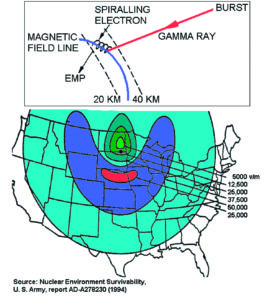

As I write this on a beautiful Spring day in Portland, I have to wonder why anyone would want to change it. Is it a little too warm or too cold? Are we so arrogant as to think that we can change the weather, the seasons, or the climate? Yet we are spending more than a TRILLION dollars per year on a Fool’s Errand, just to satisfy the superstitions of the hysterical and the ignorant. It is the ‘Precautionary Principle’ gone mad.
When our attention is so diverted by the nonsensical, we should wonder what real problems are failing to get the attention they deserve. We need not look far, as our once great cities along the West Coast are unable to cope with rampant poverty, homelessness, drug abuse, and illegal immigration.

And the underlying cause is the same as climate hysteria: the party in power here prefers to pander rather than going after the root causes of the problems. They pretend that the root causes are no more than a lack of “caring.” Translated, that means tax dollars. We already spend far more than we should and get little in return. That says that we need to find new leaders capable of rational decisions, surely looking beyond those entirely incapable of doing so.
But the problems run deeper, because a city, state, and nation running on superficial nonsense is not capable of looking deeper. We prefer to think that somewhere our vast government is actually addressing the problems that really matter to this nation. But that is frequently wishful thinking, as bureaucrats much prefer to continue doing things as they always have. They are lazy. And thinking outside the box is rarely rewarded; often punished.
Had we done so before the Japanese attacked Pearl Harbor, we might have dispersed the Pacific fleet and avoided the disaster that followed. Had we done more than place a few concrete barriers around the twin towers of the World Trade Center in New York City to prevent terrorists from driving a truck bomb into the basement as they attempted the first time, we might have saved another three thousand lives.
The idea is to think ahead of those who would do us harm, not merely to react to dangers after the fact. While we cannot protect against all possible attacks, we can protect against those where utter disaster can be avoided inexpensively.
When I worked on military problems related to the effects of nuclear weapons, we were acutely aware of the possibility that this nation could be easily attacked by an Electromagnetic Pulse (EMP) from a single nuclear weapon detonated above the continental United States, far outside the atmosphere. If detonated during the daytime, few would notice anything. There would be no blast effects, and the brilliant flash of light might well go unnoticed.
However, our world would stop working, because most things electrical would fry instantly. Our electrical power grid would suffer grievous damage, as would many devices connected to it. Our society could find itself in grave peril for a period of years. That is how long it would take to build and replace all the equipment destroyed in a single EMP attack. Look at the problems we already encounter when the power goes down for a few hours. What if that lasted for years instead of hours all across the USA? How would we continue to feed our citizens without refrigeration and water?
Our military hardware would continue to function, because we designed it to withstand this threat. That means we would be able to respond with a devastating counterattack, despite the destruction of a sizable chunk of our civilian infrastructure. Why have we left ourselves vulnerable to such vast damage?
Welcome to the world of ‘Existential Threats,’ where practically everyone overrates the importance of those threats with which they are familiar and discounts those they are not. Hence, too many will talk about their fear of Global Warming, because they have been programmed by endless propaganda to think that this planet is heating catastrophically due to human activities. Not so. The real man-made threats to our existence come from nuclear, biological, and chemical warfare. These we have some hope of preventing. Natural threats to our existence like massive earthquakes, severe storms, floods, super-volcanoes, 100,000 year ice ages, catastrophic meteor impacts, and pandemics are exceedingly rare, yet could be exceedingly destructive. These we have little to no hope of preventing. They will reoccur.
How do we logically address the wide range of threats and not merely respond to those that scare us the most? Proper application of the Precautionary Principle involves taking those precautions that address real threats at a relatively low cost. The simplest example is fastening a seat belt when driving. It costs a trivial amount of time to buckle up and greatly reduces the chance of dying in an automobile accident. More drastic measures that would be more effective, like setting a new national speed limit of 15 miles per hour or abandoning motor vehicles would be too costly. We derive great benefits from the transportation system that underpins our modern world. We have learned to consider automobiles and many other things an ‘Acceptable Risk.’ There is an entire science of evaluating risk to see how we can minimize it at reasonable cost.
In the nuclear war arena, most would either prefer not to think about it or, like former President Obama, believe that being prepared is a step toward such war. This is completely foolish. Our civilian infrastructure needs to be at least minimally prepared, just as our military infrastructure is maximally prepared. I was astonished to learn recently that we have not protected our electric power grid from EMP, as I assumed we would when I was working such problems for the military. Protection is very important to the survival of our way of life and relatively cheap.
Protection against EMP would involve a combination of surge arrestors and ‘Faraday cages,’ similar in concept to the techniques already in use to protect against surges from such threats as lightning. A typical lightning bolt can deliver 20,000 amps to anything it strikes, sometimes as much as 200,000 amps. While very rare here in the Pacific Northwest, with damage limited to a single location, thunderstorms do happen here and much more frequently elsewhere. Power companies in the Midwest and South take far more precautions against lightning than we do.
The cost to protect our electric grid against EMP has been estimated at a few billion dollars. That is a trivial amount of money when compared with the TRILLION dollars we waste annually chasing Global Warming superstitions.
Protecting our grid against EMP would also protect us from a similar event coming from the Sun. In 1859, the Earth experienced the impact of a solar coronal mass ejection, called a ‘Carrington Event,’ that struck the Earth’s magnetic field with a massive dose of charged particles. Without much in the way of electrical equipment in use at the time, the damage was limited to a widespread burnout of our primitive telegraph system, including the first transatlantic underwater cable. Today, the damage could be catastrophic. But is it likely to happen again? We were again in the line of fire after a massive solar flare in 2012. Happily, it missed the Earth.
How theoretical is nuclear EMP? Is it just the product of a few overactive imaginations leading to an overblown threat estimate? Before the United States detonated a megaton class nuclear test 400 kilometers over Johnston Island in the Pacific in 1962, the experts of the time, including one of my professors, predicted little damage. But the ‘Starfish’ explosion damaged many satellites in orbit and caused notable electrical damage in Hawaii, long before we became overwhelmingly dependent on computers built with very vulnerable semiconductors. Smaller Soviet high altitude nuclear tests over Kazakhstan caused substantial damage to their electrical grid.
Gordon J. Fulks lives in Corbett and can be reached at gordonfulks@hotmail.com. He holds a doctorate in physics from the University ofChicago’s Laboratory for Astrophysics and Space Research.
(Unless otherwise noted, the opinions expressed are the author’s and do not necessarily reflect the views of the Northwest Connection.)
No Comments
Leave a comment Cancel